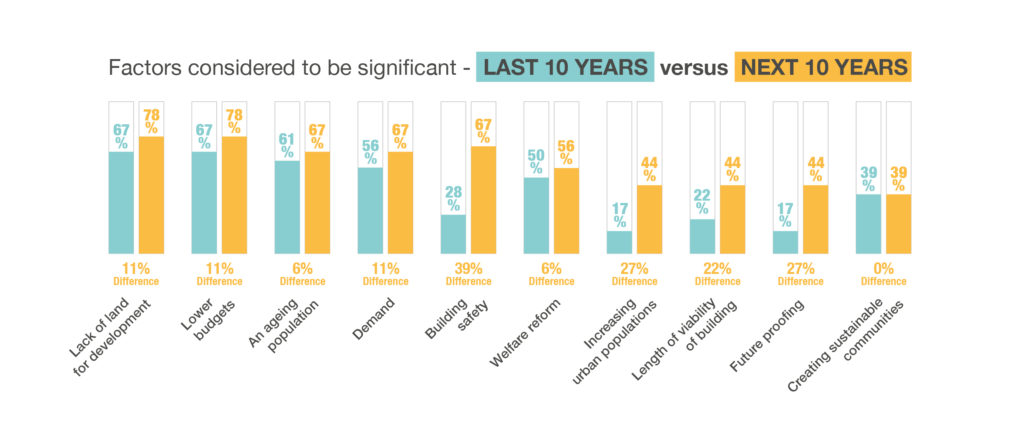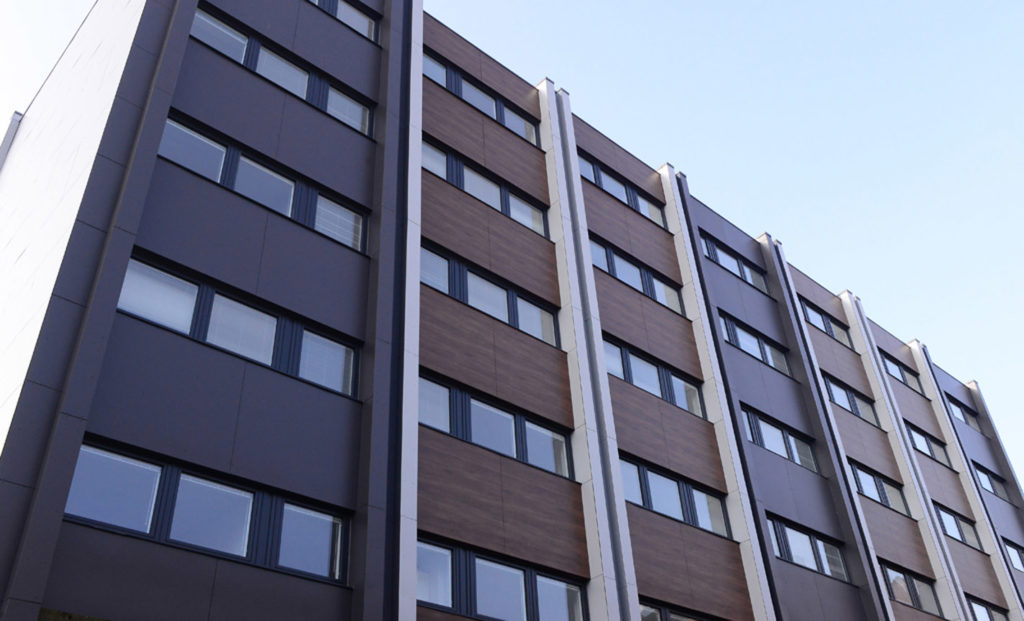 What is influencing social housing design and build and why is it changing? Epwin Group, a leading manufacturer and supplier of PVC-U windows, doors and fascia systems, conducted a wide-ranging survey of social housing professionals to find out. Andrew Reid, Commercial Sales Director at Epwin Window Systems, deciphers the key findings and shares his thoughts what will drive decision making over the next 10 years.
What is influencing social housing design and build and why is it changing? Epwin Group, a leading manufacturer and supplier of PVC-U windows, doors and fascia systems, conducted a wide-ranging survey of social housing professionals to find out. Andrew Reid, Commercial Sales Director at Epwin Window Systems, deciphers the key findings and shares his thoughts what will drive decision making over the next 10 years.
Epwin has a 40-year history of working collaboratively with UK social housing, and over that time it has been able to track the changing political, social, environmental and technical trends that influence demand for our products. However, 2018 is the first year the company took the decision to formalise this approach and measure influence and change factors via a survey of social housing professionals.
The objective was to better understand the factors that social housing professionals perceive as influencing the design and build of social homes over the next decade, and how this compares to forces over the previous 10 year. History and thousands of installations have taught us that the more we understand about change the quicker we can anticipate landlords’ needs. The research findings in the Social Housing: Building for the Future report make for interesting reading.

The survey
The survey, conducted in conjunction with the Housing Quality Network, asked social housing professionals to score 20 factors for their impact on social housing design and build. The table breaks down these 10 comparative factors. Unsurprisingly, considering the current political climate, the leading 10 factors highlighted bring into question the nation’s capacity to deliver the volume of affordable homes needed to meet demand. The survey suggests that many of these combining factors have compounded from the previous decade to the next, thus further exacerbating the lack of supply.
One aspect that’s important to note is that this research was conducted prior to Prime Minister Theresa May’s announcement to commit a widely unanticipated £2bn to housing associations in a bid to provide tens of thousands of new affordable homes. This almost certainly would have registered on the survey results.
According to the survey the two leading barriers remain consistent; the lack of available land for development and reduced access to funding to build homes.
In both cases close to 80% of respondents believe these will be significant over the next ten years, that’s up over 10% from the last. The demand for housing consistently outstripping supply is also in the top five identified by close to 70% of respondents.

Less money
These factors combined with the UK’s ever increasing urban populations (44% consider this significant), and the financial pressure being caused by welfare reform (56%), are all negatively affecting the ability of social housing providers to develop affordable homes.
One way that Epwin brands have responded to reduced landlord budgets is by developing a free specification service to ensure that social housing providers are getting the window and door solutions they need, not just for today, but for the next 15 or 20 years. The company has often seen situations where asset and maintenance managers lose out on the products they know they want and need because they cannot justify the extra capital expenditure.
Detailed specification as part of the service breaks this down so that procurement can consider less-obvious or long-term return on investment considerations such as safety, external environment and human factors.

We’re getting older
Concerns also exist surrounding the type of homes being developed and whether they meet the needs of evolving demographic. An aging population is a significant concern for respondents (67%), and the numbers support this. It is predicted that by the mid-2030s, there will be over 16 million ‘older people’, three million of which will be over 85.
Social landlords are working hard to try and keep pace with demand, with both specialist and adapted new build properties and by retrofitting existing homes so they are fit-for-purpose. We’ve had to innovate accordingly.
Epwin is already specifying, fabricating and installing doors and window systems that take older people and reduced mobility into consideration, particularly handles and locking systems, and we’re anticipating a steady increase in demand for electric windows and keyless fobs that unlock doors before you get to them.

Safety first
Safety was the factor that showed the largest shift in the proportion of survey respondents considering it to be a concern influencing social housing design and build for the coming decade (67%) in comparison to those identifying it as a significant factor over the last 10 years (28%).
Once again specification has been held up to scrutiny in a post Grenfell fire world, which is yet another important reason why Epwin brands such as Swish, Profile 22, Spectus and Permadoor have invested heavily in this area for many years.
Yes, a top-hung casement window may appear to tick the required cost and safety boxes in high-rise properties, but when you factor in their susceptibility to being tampered with, Epwin’s specification process will usually suggest a fully reversible, tilt and turn flush or tilt and turn solution. More costly on the face of it, but much safer in that environment.









